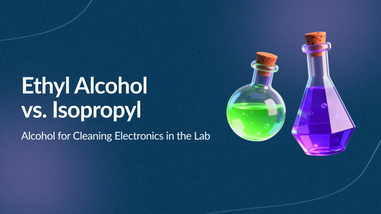- No products in the cart.
Acids are fundamental to chemistry, playing pivotal roles in various chemical reactions, industrial processes, and biological functions. Understanding how to name acids correctly is essential for students, chemists, and professionals in related fields. This comprehensive guide will walk you through the rules and conventions for naming different types of acids, ensuring you can master the art of acid nomenclature.
The Basics of Acid Nomenclature
Before diving into the specifics, it’s crucial to understand what acids are. Acids are substances that can donate a proton (H⁺) to another substance or accept an electron pair in reactions. They typically have a sour taste, can turn blue litmus paper red, and react with bases to form salts.
Acid names are derived from the anions (negatively charged ions) they contain. The nomenclature depends on whether the acid is binary (containing hydrogen and one other element) or oxyacid (containing hydrogen, oxygen, and another element).
Naming Binary Acids
Binary acids consist of hydrogen and one other nonmetal element. The naming convention for binary acids is straightforward:
- Prefix “hydro-”: This prefix is added to the root name of the nonmetal element.
- Root of the nonmetal’s name: This is typically the stem of the nonmetal element’s name.
- Suffix “-ic”: This suffix replaces the ending of the nonmetal’s name.
- Word “acid”: The name ends with the word “acid.”
For example:
- HCl: Hydrogen chloride becomes hydrochloric acid.
- HBr: Hydrogen bromide becomes hydrobromic acid.
- HI: Hydrogen iodide becomes hydroiodic acid.
Naming Oxyacids
Oxyacids contain hydrogen, oxygen, and another element (usually a nonmetal). The naming convention for oxyacids depends on the polyatomic ion (anion) they contain. These acids do not use the “hydro-” prefix. Instead, the name is based on the root name of the polyatomic ion:
- Identify the polyatomic ion: Determine whether the anion ends in “-ate” or “-ite.”
-
Suffix “-ic” or “-ous”:
- If the anion ends in “-ate,” the acid name will end in “-ic.”
- If the anion ends in “-ite,” the acid name will end in “-ous.”
- Word “acid”: The name ends with the word “acid.”
For example:
- H₂SO₄: The sulfate ion (SO₄²⁻) ends in “-ate,” so the acid is sulfuric acid.
- H₂SO₃: The sulfite ion (SO₃²⁻) ends in “-ite,” so the acid is sulfurous acid.
- HNO₃: The nitrate ion (NO₃⁻) ends in “-ate,” so the acid is nitric acid.
- HNO₂: The nitrite ion (NO₂⁻) ends in “-ite,” so the acid is nitrous acid.
Special Cases and Exceptions
While the above rules cover most acids, there are a few special cases and exceptions to be aware of:
-
Phosphoric and Phosphorous Acids: Phosphoric acid (H₃PO₄) comes from the phosphate ion (PO₄³⁻), while phosphorous acid (H₃PO₃) comes from the phosphite ion (PO₃³⁻).
-
Carbonic Acid: Carbonic acid (H₂CO₃) is derived from the carbonate ion (CO₃²⁻).
-
Acetic Acid: Acetic acid (CH₃COOH) is an organic acid derived from the acetate ion (CH₃COO⁻). Unlike inorganic acids, organic acids often follow different naming conventions based on their structure.
-
Per- and Hypo- Prefixes: Some oxyacids have additional prefixes to indicate the number of oxygen atoms relative to the standard form. For example:
- Perchloric acid (HClO₄): The perchlorate ion (ClO₄⁻) has one more oxygen than the chlorate ion (ClO₃⁻).
- Hypochlorous acid (HClO): The hypochlorite ion (ClO⁻) has one less oxygen than the chlorite ion (ClO₂⁻).
Practical Tips for Learning Acid Names
-
Memorize Common Ions: Familiarize yourself with the names and formulas of common polyatomic ions. This will make it easier to apply the naming rules.
-
Practice Regularly: Consistent practice with different acid formulas will reinforce your understanding of the naming conventions.
-
Use Mnemonics: Create mnemonic devices to help remember the rules and exceptions. For example, “-ate to -ic, -ite to -ous” can be a helpful reminder for naming oxyacids.
-
Consult Reference Materials: Use chemistry textbooks, online resources, and flashcards to review and test your knowledge of acid names.
Conclusion
Mastering the nomenclature of acids is a fundamental skill in chemistry that requires understanding specific rules and conventions. Whether dealing with binary acids or oxyacids, the naming process is systematic and logical. By familiarizing yourself with common ions, practicing regularly, and utilizing mnemonic devices, you can become proficient in naming acids and enhance your overall understanding of chemistry. This knowledge is not only essential for academic success but also for practical applications in scientific research and industry.
For over 45 years, Lab Pro Inc. is your steadfast source for acids, lab chemicals, premium cleanroom wipes, hand tools, lab equipment, and PPE apparel. Trusted by aerospace industries, medical device companies, and laboratories globally, we epitomize exceptional quality in every product. Experience the convenience of next day service in California. Contact us online or at 888-452-2776 to explore solutions tailor-made for the laboratory industry. Elevate your experiments with Lab Pro Inc. – your partner in precision and excellence.












































